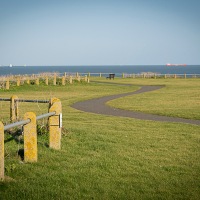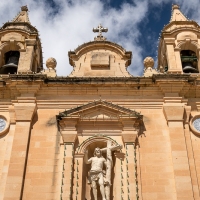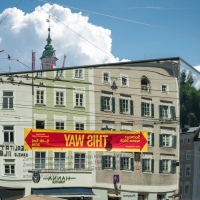Hiding quietly behind St Pancras International Station in London, is St Pancras Old Church.

Built on a site of Christian worship dating back probably as far as the 4th century, the church itself has been there since the 11th or 12th century and it has seen its share of joys and woes.
It was virtually abandoned in the 13th century, rebuilt in the 14th, abandoned again in the 16th, restored in the 17th, served as barracks to Cromwell’s troops in the mid-17th, lost a tower and gained a bell tower in the 19th, collapsing into ancient subterranean drains in the 21st. Quite a history, you have to admit.
Despite its current structural problems, it is still a working church, and the beautiful, surrounding grounds are popular with locals and their dogs. It is a little haven of peace right next to the railway tracks out of St Pancras (come out of the exit for taxis, turn right and it’s a 5 minute walk).
I was there on a bright, sunny day and took refuge in the shade and dappled light. The grounds have much to reveal if you have time for a wander.
Towards the back, close to the railway line, lurks the Hardy Tree. Thomas Hardy, he of Tess of the d’Urbervilles and Far from the Madding Crowd, studied architecture in London before becoming a famous writer. During the 1860s, a railway line was to be built across part of the churchyard at Old St Pancras Church and the work of dismantling tombs and exhuming bodies was given Blomfield based in Covent Garden, and Thomas Hardy was the lucky employee to be assigned that unenviable task. Under his oversight many of the headstones were moved and arranged around an ash tree, known now as The Hardy Tree.
A short distance from the tree is the Soane Mausoleum, a Grade 1 listed monument (1 of only 2 in London, the other being Karl Marx’s tomb in Highgate) designed by Sir John Soane, architect of the Bank of England. He was also responsible for the redesign of Malvern Hall, my old school, so I was particularly pleased to find this. The classic design with central dome and ionic columns is much admired in the architectural world. Indeed, the central domes structure is said to have inspired Sir Giles Gilbert Scott’s design of the K2 British telephone box. The mausoleum was erected in 1816 after his wife’s death and now holds Soane, together with his wife and son.
Close to the mausoleum, stands a Grade 2 listed structure from 1879, the Burdett-Coutts Memorial Sundial, watched over by stone dogs. It is a beautiful structure built in the decorative gothic style, with relief carvings of St Pancras and St Giles, and flower mosaics around the base.
The churchyard has informative signs to help the visitor, along with fascinating pictures of how the church and grounds used to look.
.























I’ve been a big fan of taking photos of churches. They’re always very ornate and their architecture is incredible. These are fabulous photos of this church. A very nice approach to the challenge for Frizz this week.
LikeLike
I love their sense of history and can’t resist a wander around a churchyard.
LikeLike
Great tour, and such a history for that church.
LikeLike
What a beautiful church! Great shots Debbie and thanks for sharing hon. 😀 *hugs*
LikeLike
What a history for this site……very interesting.
LikeLike
what a peaceful location!
LikeLike
Terrific! The gardens look wonderful, that summer’s day – more ‘romantic’ than in the old pictures. Lets hope they fix the collapse so that the Old Church can continue for another millennium 🙂
LikeLike